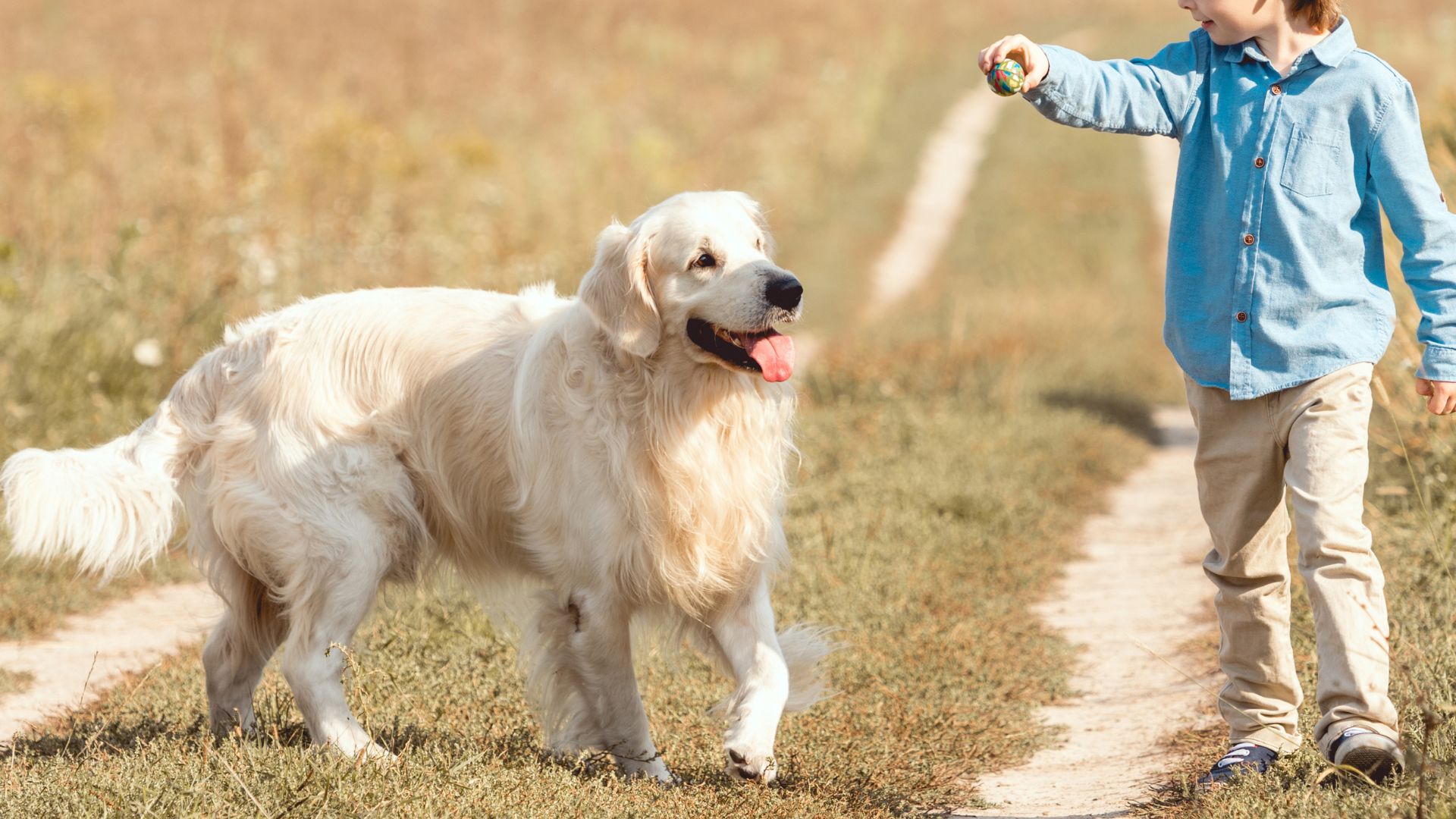Introducing a dog into the family isn’t just about adding a playful companion—it’s also an opportunity to teach children valuable life lessons. The right dog breed can help kids learn empathy, patience, and responsibility through daily care and interaction.
From feeding and grooming to exercise and playtime, looking after a pet encourages a sense of commitment that can shape a child’s character for years to come.
Certain breeds are especially well-suited for households with children because of their gentle temperament, eagerness to please, and adaptability to family life. These dogs not only provide unconditional love but also encourage kids to participate in their care, fostering a strong bond between child and pet.
Whether you’re seeking an energetic playmate who thrives on outdoor adventures or a calm, affectionate friend who enjoys quiet moments, there’s a breed out there to match your family’s needs.
In this guide, we’ll explore the dog breeds that excel at teaching children responsibility while becoming beloved members of the household.
Dog Breeds that are Great at Teaching Children Responsibility
1. Cavalier King Charles Spaniel
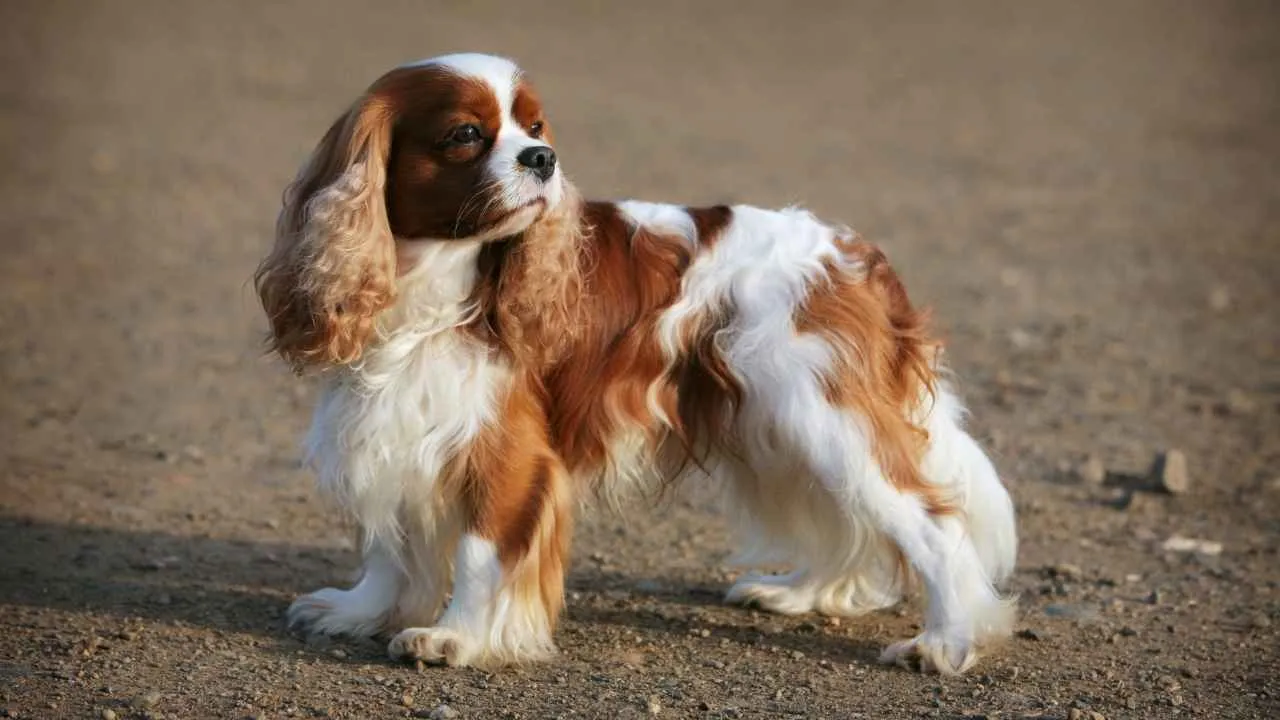
Also known simply as the Cavalier, this charming toy spaniel blends aristocratic elegance with a warm, approachable nature. Standing no taller than 13 inches and weighing 13–18 pounds, Cavalier King Charles Spaniels have a lifespan of 12–15 years and belong to the Toy Group in the American Kennel Club.
Their expressive, round eyes and silky coat—available in four distinct color patterns—are signature features. With a history rooted in British nobility, they were cherished lap companions to royalty but remain just as devoted in modern family homes.
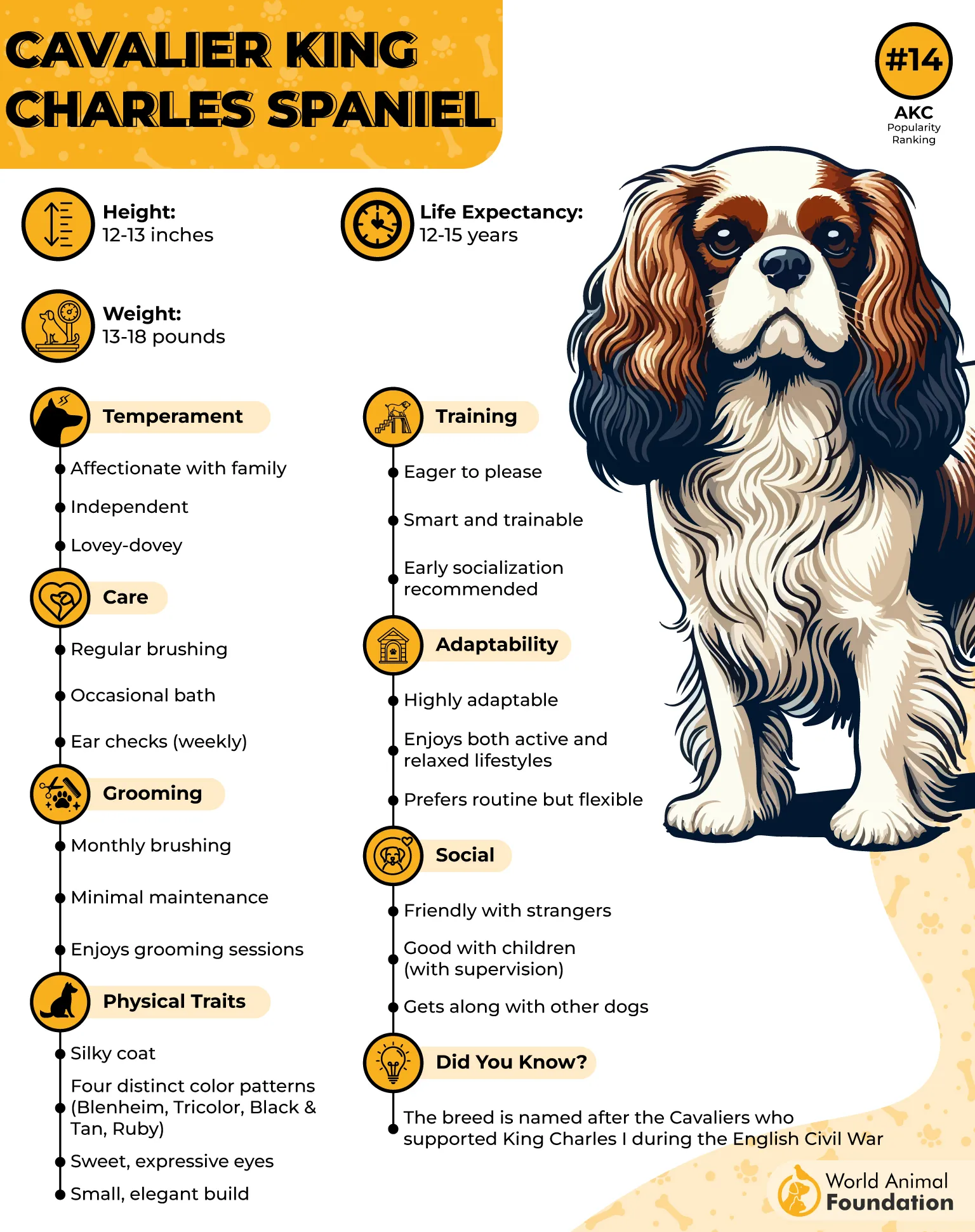
Cavalier King Charles Spaniels teach children valuable responsibility lessons through their affectionate and adaptable nature. PetMD says the Cavalier King Charles Spaniel is a loving and affectionate companion dog breed.
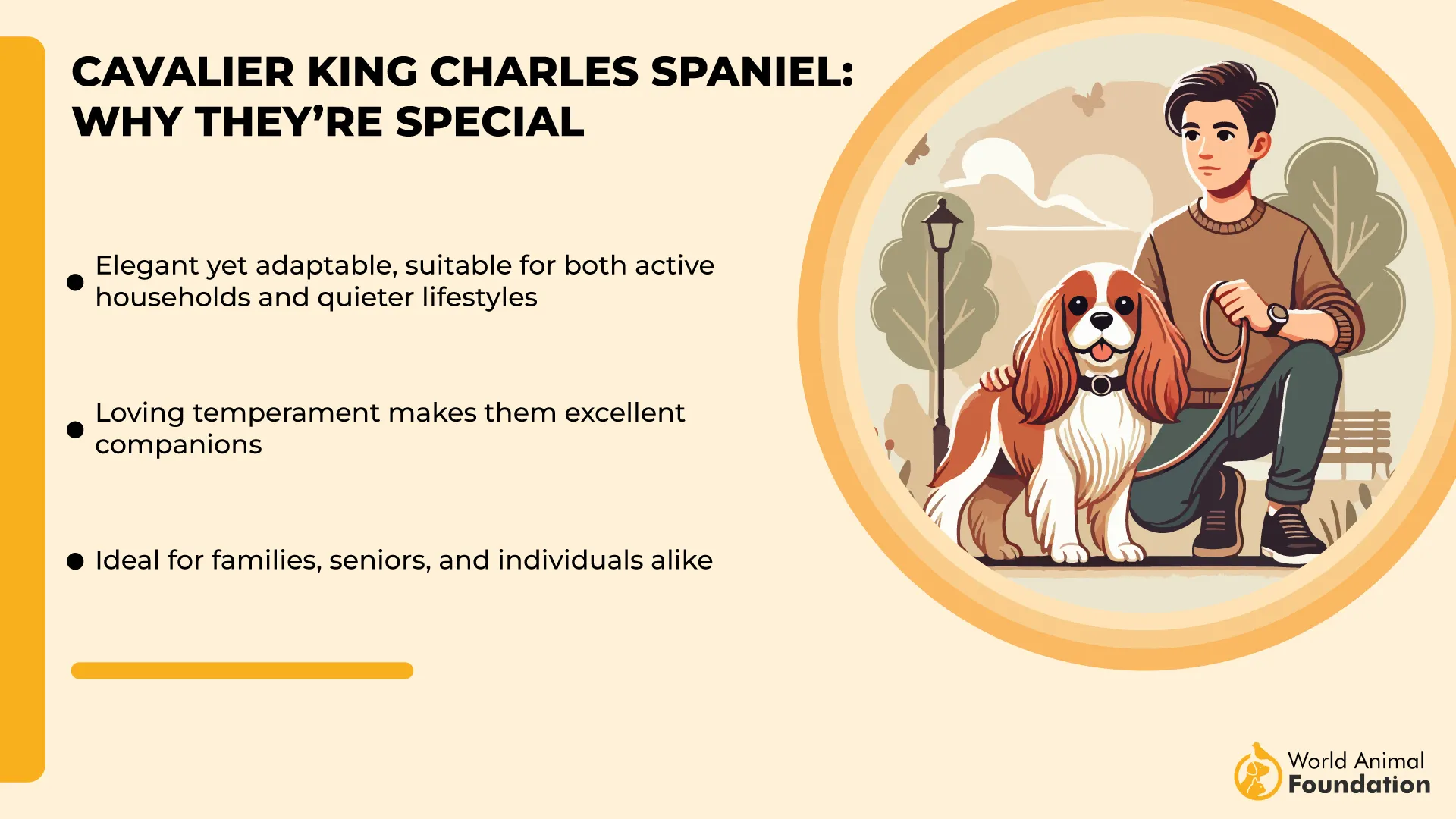
Kids learn the importance of nurturing by providing daily care like feeding, brushing, and offering affection. Their gentle temperament encourages children to handle pets with patience and kindness, showing respect for boundaries.
Cavaliers also thrive on routine play and walks, helping kids understand the value of consistency and commitment. At the same time, their playful spirit shows that responsibility can be fun, turning everyday tasks into joyful moments.
Most importantly, by experiencing the Cavalier’s natural ability to offer comfort, children develop empathy—realizing that caring for a pet means supporting both its physical needs and emotional well-being.
Cavaliers adapt easily to various lifestyles, happily engaging in backyard games or lounging indoors. Their patience with children, other pets, and even strangers makes them ideal for teaching respectful interaction and consistent care.
Fun Fact: Cavaliers are known for their “melting” expression—a soft, soulful gaze that has been winning human hearts for centuries.
2. Pug
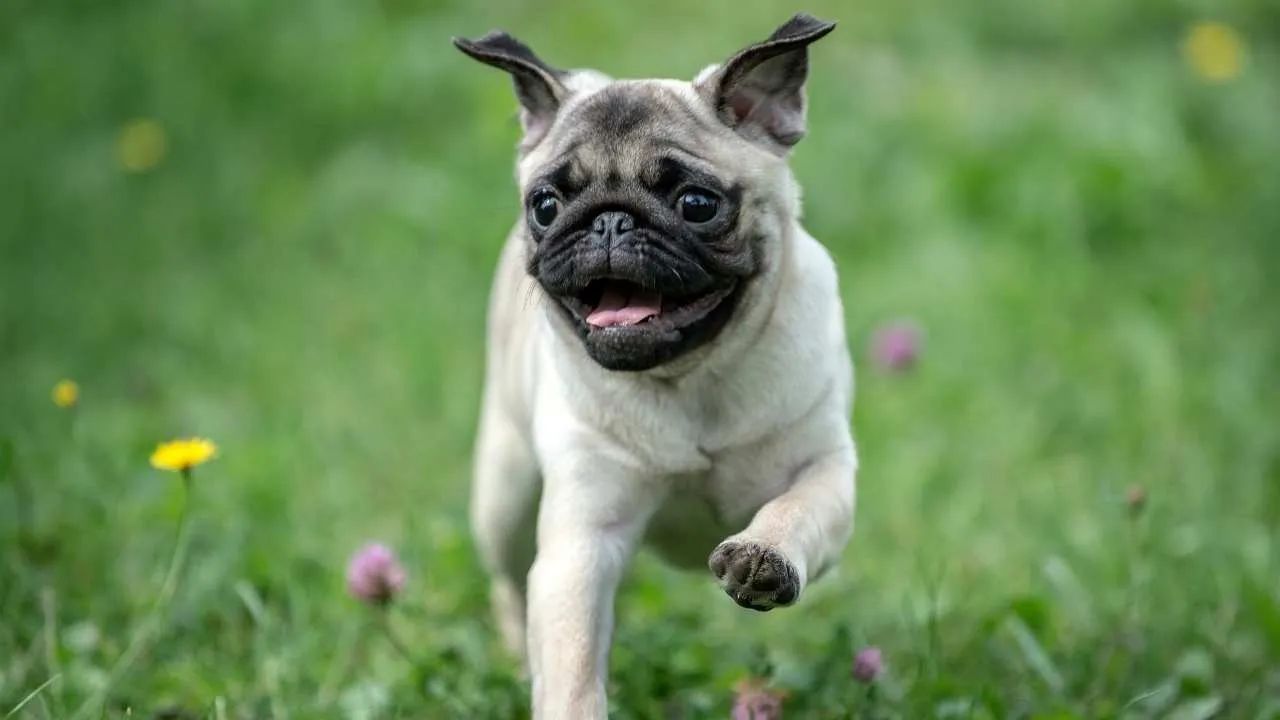
Known as the “multum in parvo” dog, meaning “a lot in a little,” the Pug combines a sturdy frame with an affectionate heart. AKC says Pugs live to give love and to be loved in return.
Originating in China as a cherished companion of emperors, the breed later became a favorite of European royalty, including Holland’s House of Orange.
Standing 10–13 inches tall and weighing 14–18 pounds, Pugs belong to the Toy Group and live around 13–15 years. They have a distinctive round head, large expressive eyes, a wrinkled brow, and a short, glossy coat in colors like fawn, silver, or black.
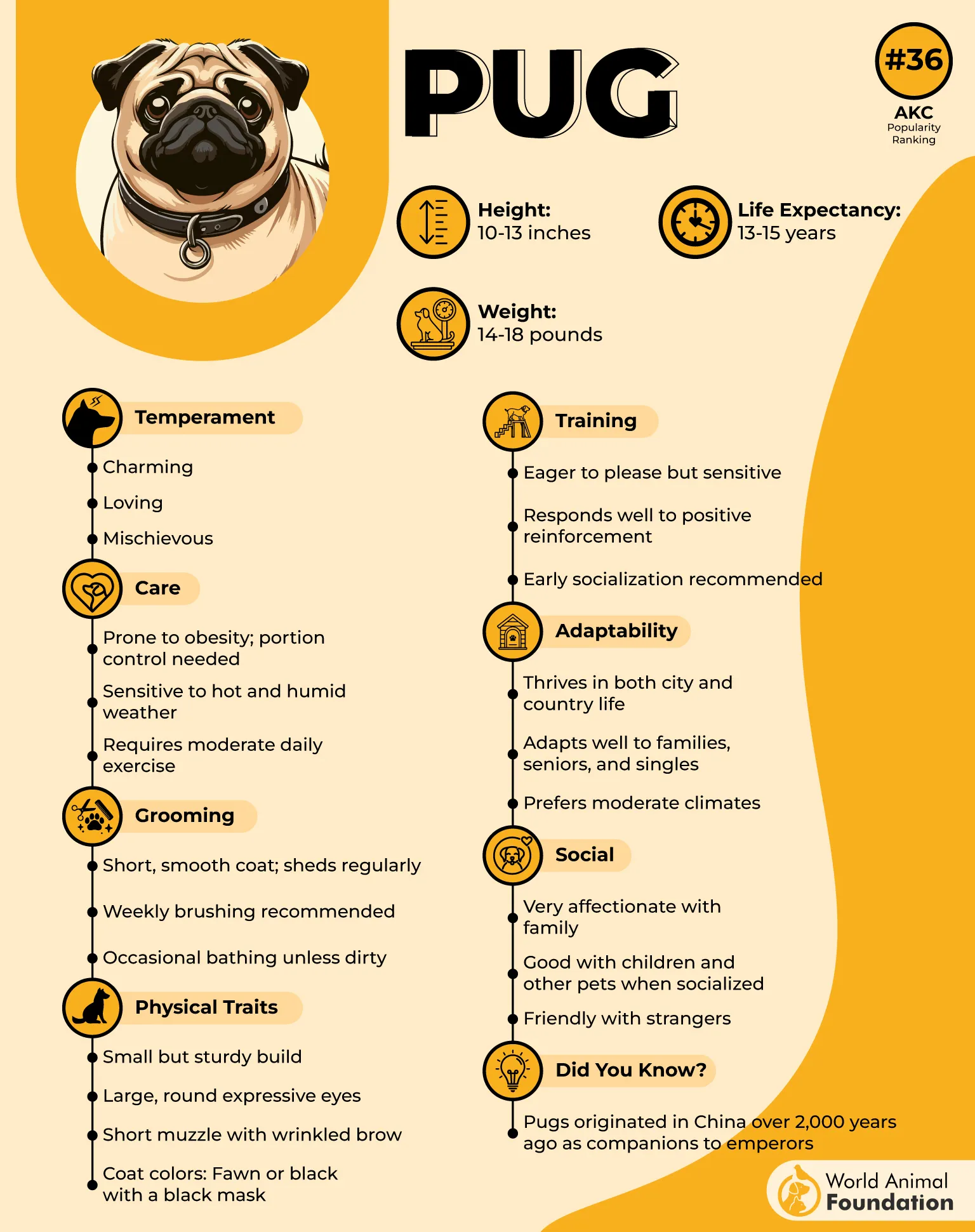
These small dogs teach children that responsibility goes beyond feeding and play—it also means understanding a pet’s unique needs. Because pugs can gain weight easily and are prone to overheating, kids learn the importance of monitoring health and providing the right balance of exercise and rest.
Their need for constant affection encourages children to develop empathy and patience, showing that love and care are daily commitments. Training and socializing a pug also helps kids understand that behavior can be shaped with kindness and consistency.
Above all, the bond formed through cuddles, walks, and play reminds children that true responsibility is about showing up with love, care, and respect every single day.
Fun Fact: Pugs are notorious for their loud snoring, often turning bedtime into a comical soundtrack.
3. Boxer
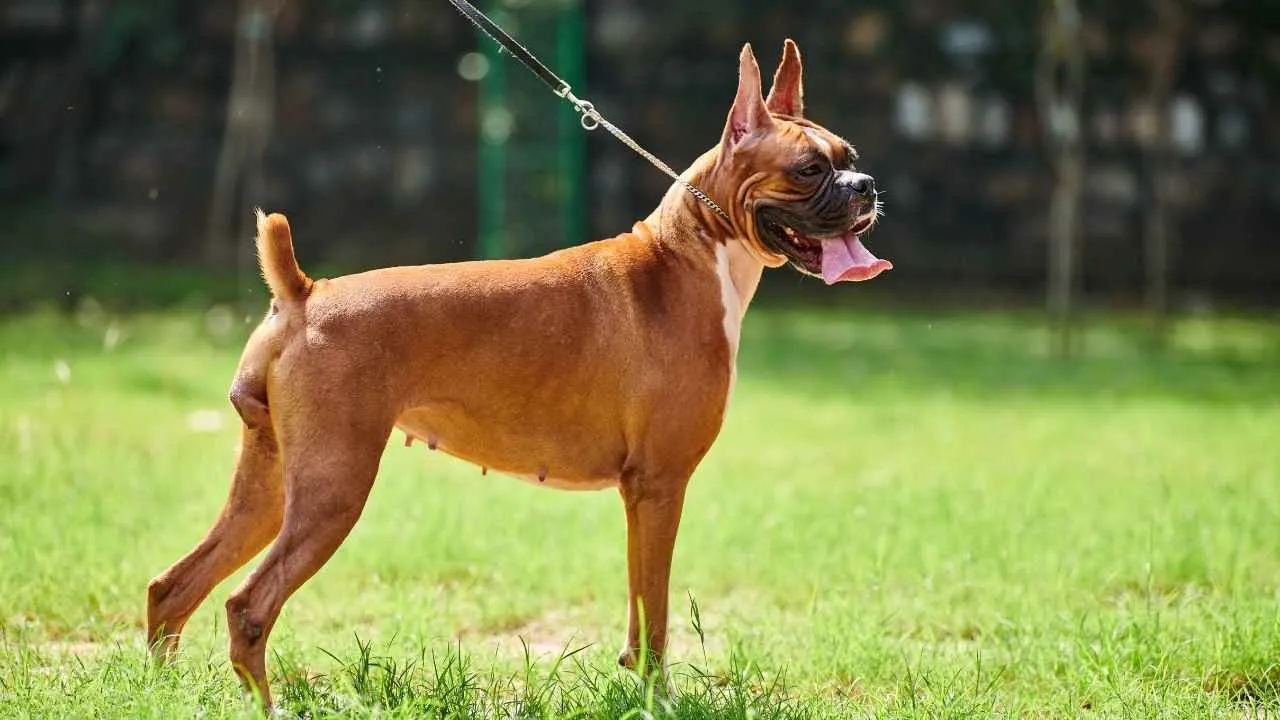
The Boxer is a muscular, athletic breed that combines strength with a fun-loving spirit. Developed in Germany during the late 19th century from the Bullenbeisser and mastiff-type dogs, Boxers have been treasured as both working dogs and family companions. WebMD says Boxer dogs are friendly and protective, making them great family pets.
Males can reach 25 inches at the shoulder, with females slightly smaller, and they typically weigh 50–80 pounds. Their short, smooth coat—often fawn or brindle with white markings—shows off their powerful build, while dark brown eyes and a wrinkled forehead add to their alert, expressive look.
They are part of the Working Group in the American Kennel Club and live around 10–12 years.
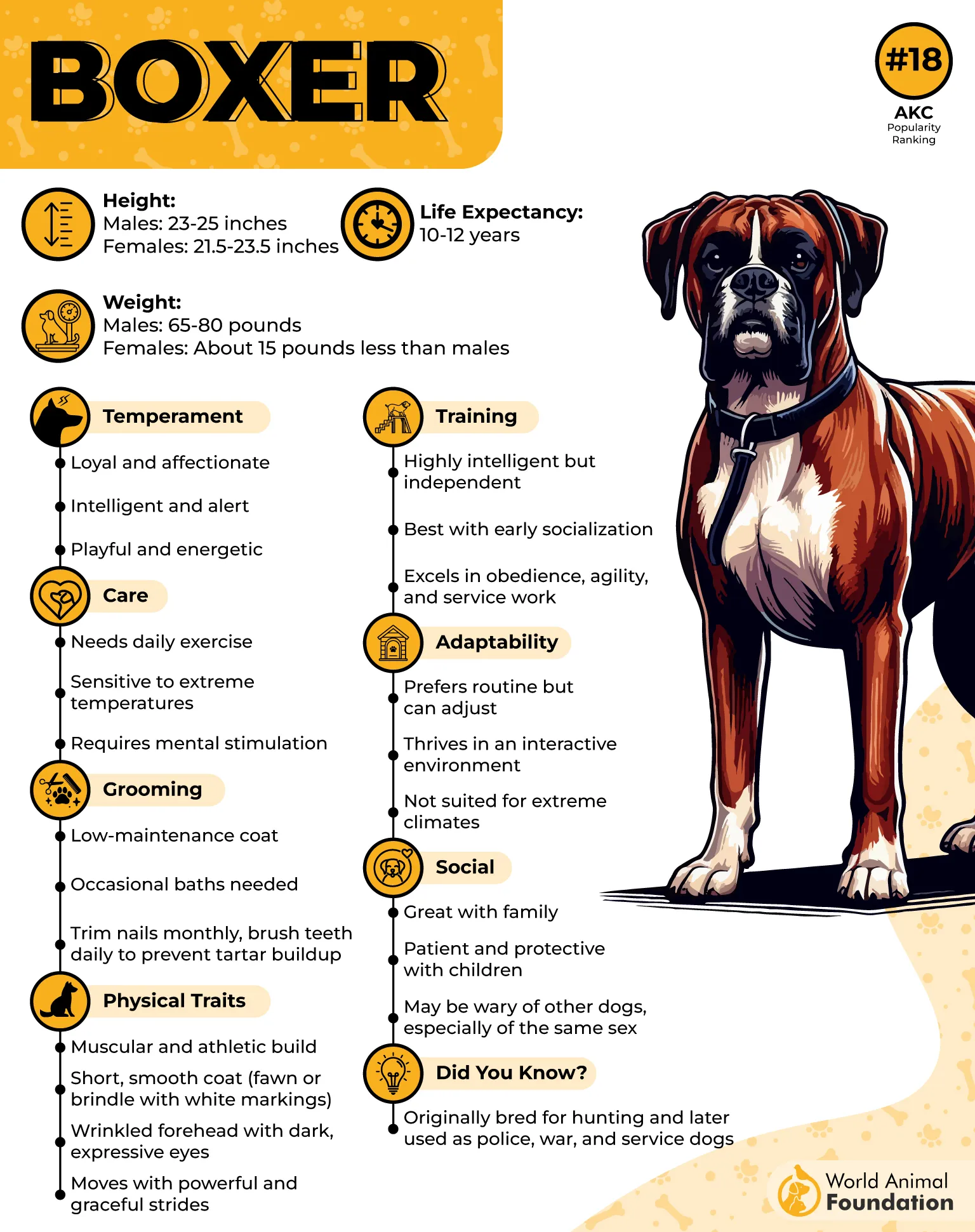
Boxers teach children responsibility through their combination of loyalty, intelligence, and playful energy. Their affectionate nature helps kids understand the importance of consistent love and care, while their eagerness to learn makes training a shared responsibility that encourages patience and follow-through.
Because Boxers are sturdy and tolerant of energetic play, children learn how to balance fun with respectful handling, recognizing that even strong dogs need kindness and guidance. Daily exercise, play sessions, and bonding activities with a Boxer reinforce the idea that responsibility isn’t a one-time task but a continuous commitment filled with joy and companionship.
Boxers are playful and affectionate, thriving in active homes where older children can match their energy. They also benefit from plenty of toys and mental stimulation to prevent boredom-related mischief.
Fun Fact: Despite their strong, athletic physique, Boxers are famous for their goofy, clown-like antics that keep their families entertained.
4. Poodle
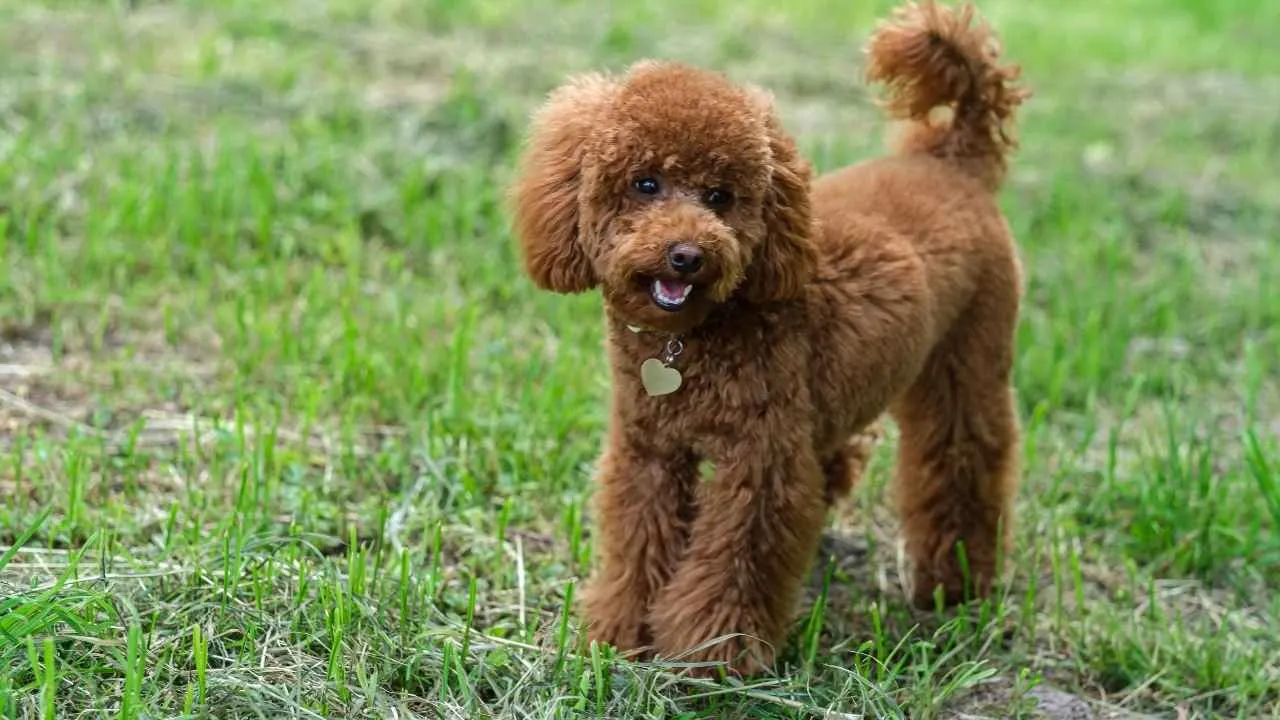
Renowned for their elegance and intelligence, Poodles come in three size varieties—Standard (over 15 inches), Miniature (15 inches or under), and Toy (no more than 10 inches). They typically weigh 6–70 pounds, depending on size, and live 10–18 years.
With their signature curly, low-allergen coats in colors such as black, white, or apricot, Poodles belong to the Non-Sporting Group (Standard and Miniature) or Toy Group in the American Kennel Club.
Originally bred in Europe as water retrievers, their versatility and charm have made them a favorite family companion.
Poodles offer children unique opportunities to learn responsibility by blending care with personal growth. Their intelligence and sensitivity require consistent engagement, teaching kids the importance of routines like grooming and exercise.
Because Poodles thrive on mental stimulation, children also learn that responsibility isn’t just about meeting basic needs but about providing enrichment through play, training, and companionship.
Growing up with dogs like Poodles can boost a child’s social skills, empathy, and emotional awareness—lessons that extend beyond pet care and into everyday life. By nurturing a Poodle, kids discover that responsibility involves commitment, patience, and a balance of both physical and emotional support.
Poodles thrive in active households and love being at the center of family life. They are affectionate yet alert, adapting to both busy and relaxed environments, making them a great match for teaching kids commitment and empathy.
Fun Fact: Despite their refined appearance, Poodles are exceptional athletes and excel in dog sports like agility and obedience trials.
5. Labrador Retriever

The Labrador Retriever, often simply called the Lab, is one of the most popular and versatile family dogs in the United States.
Originating from Newfoundland and later refined in the UK as a retrieving and hunting companion, this breed stands 21.5–24.5 inches tall, weighs 55–80 pounds, and has a life span of 10–12 years.
Recognized by the American Kennel Club’s Sporting Group, Labs are instantly recognizable for their kind eyes, wide head, dense water-resistant coat (yellow, black, or chocolate), and iconic “otter” tail.
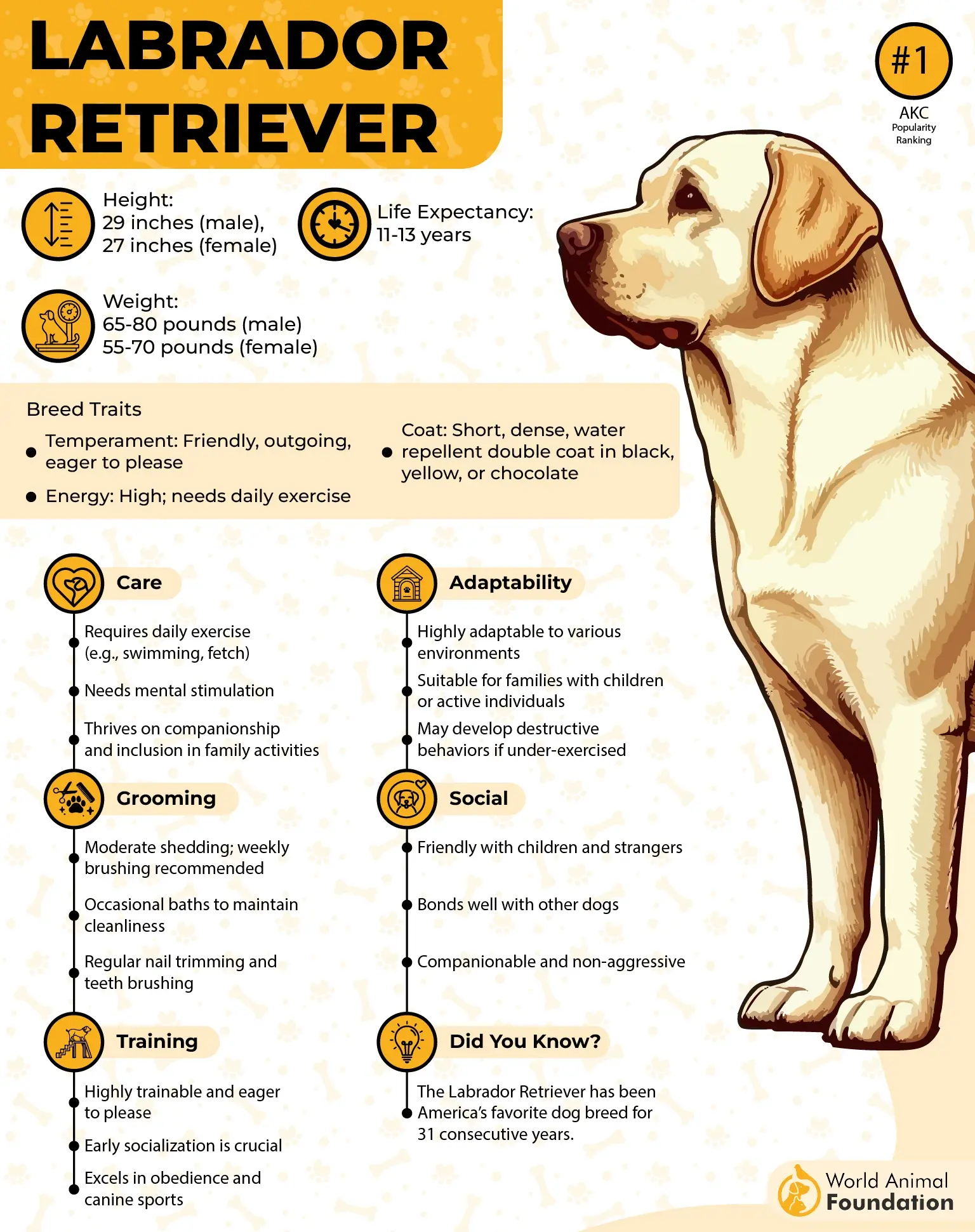
Caring for a Labrador Retriever teaches children to gain confidence, independence, and decision-making skills that build self-esteem. Labradors’ gentle temperament encourages empathy, as children learn to recognize and respond to their pet’s emotions with kindness and patience.
Managing a Labrador’s care—balancing walks, play, and routines alongside schoolwork—helps young ones develop time management and priority-setting abilities. Their active lifestyle also shows children the importance of regular exercise and health, while moments of cuddling teach emotional support and stress relief.
With parents modeling proper care and guiding safe interactions, children gradually grow into responsible caregivers, learning valuable life lessons that extend far beyond pet ownership.
Labradors thrive on interaction and will happily join every family activity, from outdoor adventures to quiet evenings at home. Their adaptability, friendliness, and desire to bond make them perfect partners for teaching children how to care for and respect a pet.
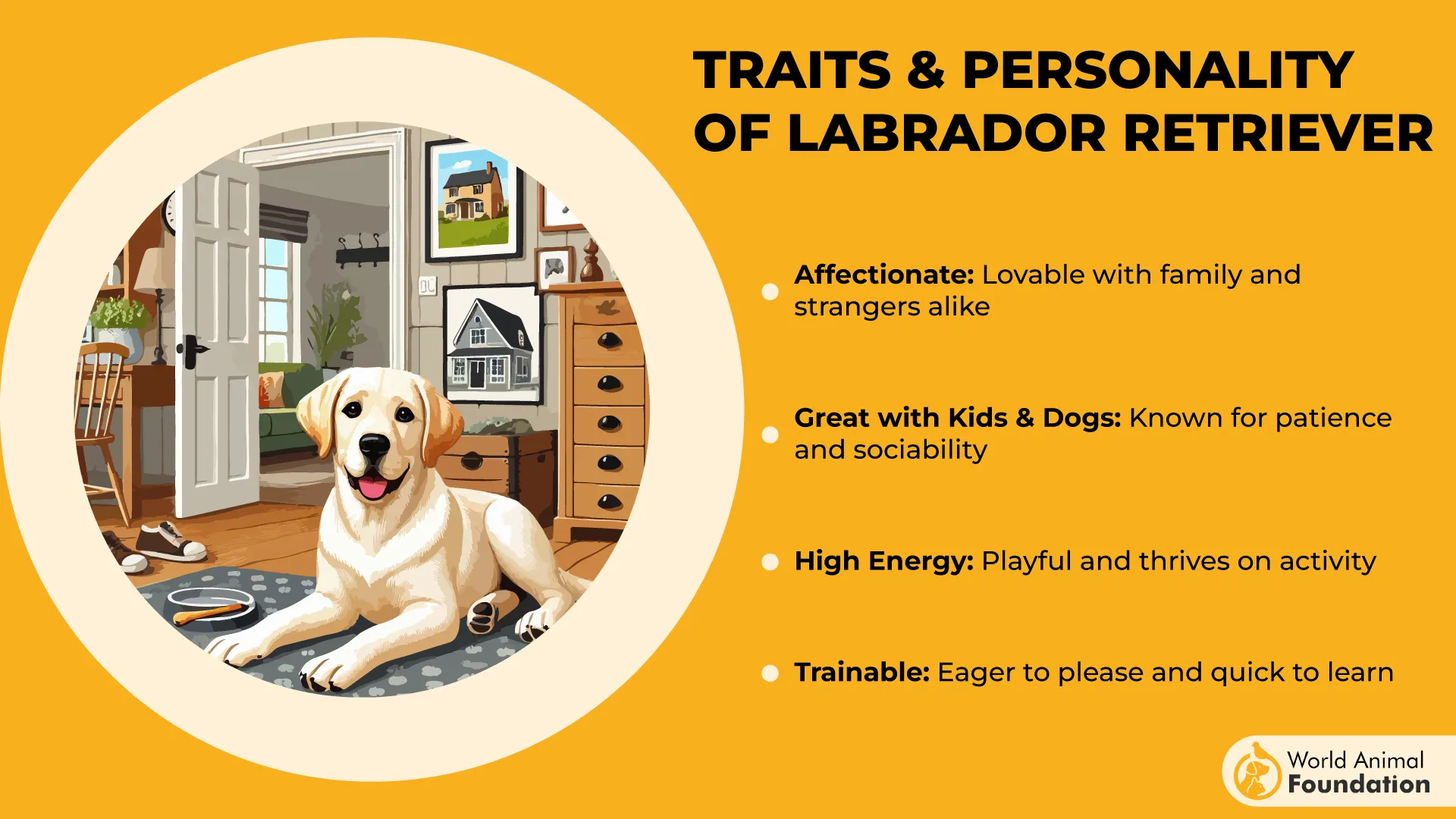
Fun Fact: Labs are natural athletes—many excel in canine sports like dock diving and agility, making them ideal companions for active families.
6. Golden Retriever
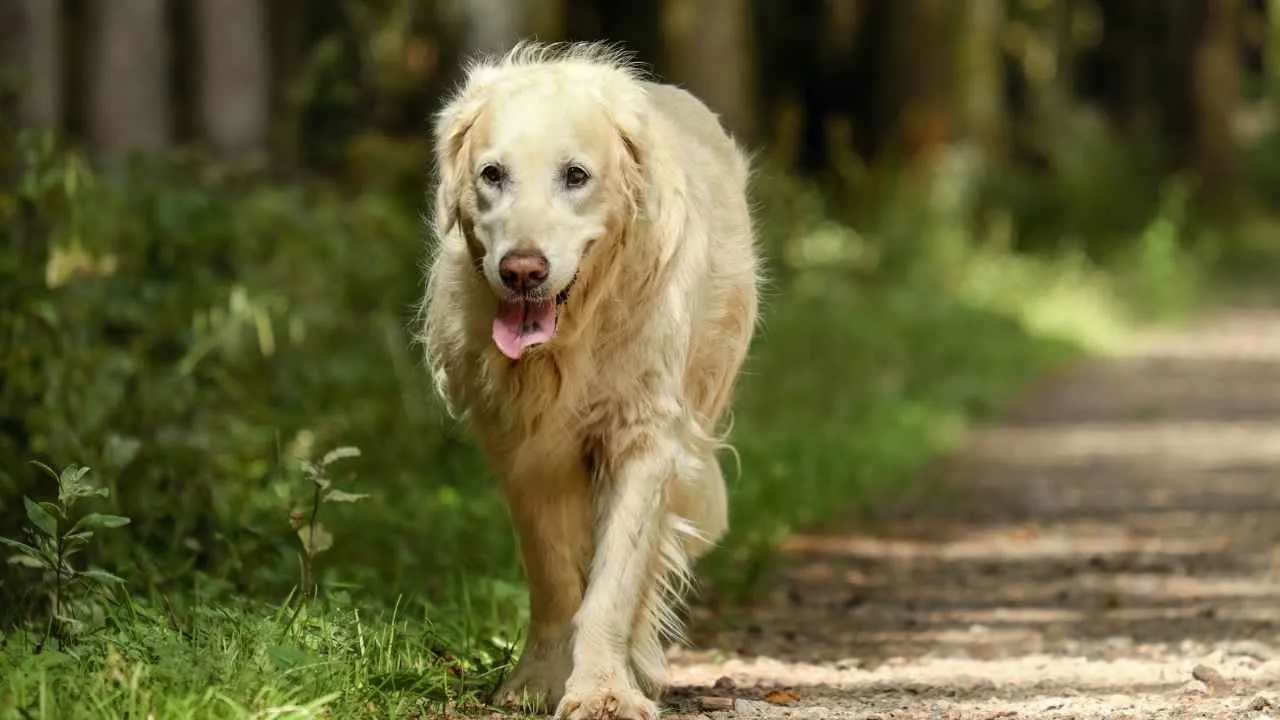
The Golden Retriever, often called simply the “Golden,” is a beloved Scottish gundog known for its beauty, intelligence, and dependable temperament.
Developed in the 19th century by Lord Tweedmouth at the Guisachan estate in Scotland, this breed was originally created for retrieving game on both land and water.
Standing 21.5–24 inches tall and weighing 55–75 pounds, Goldens have a lifespan of 10–12 years and belong to the Sporting Group in the American Kennel Club. Their hallmark features include a dense, water-repellent golden coat, a broad, friendly face, and a smooth, powerful gait.

Golden Retrievers help children learn responsibility by showing them the importance of consistency and patience. Their calm and gentle temperament encourages kids to be careful and respectful in their interactions, teaching them that kindness strengthens trust.
With their playful and active nature, Golden Retrievers also remind children that regular exercise, play, and daily care are essential commitments in pet ownership. Their affectionate and emotionally intelligent behavior helps kids understand the value of providing not just physical care, but also emotional support.
In this way, Golden Retrievers become both loyal companions and loving teachers of responsibility. Goldens are friendly with children, other pets, and strangers alike, offering an excellent opportunity for kids to learn socialization skills through their pet.
Fun Fact: Golden Retrievers maintain a playful, “puppy-like” personality well into adulthood, keeping family life joyful and engaging.
7. Beagle
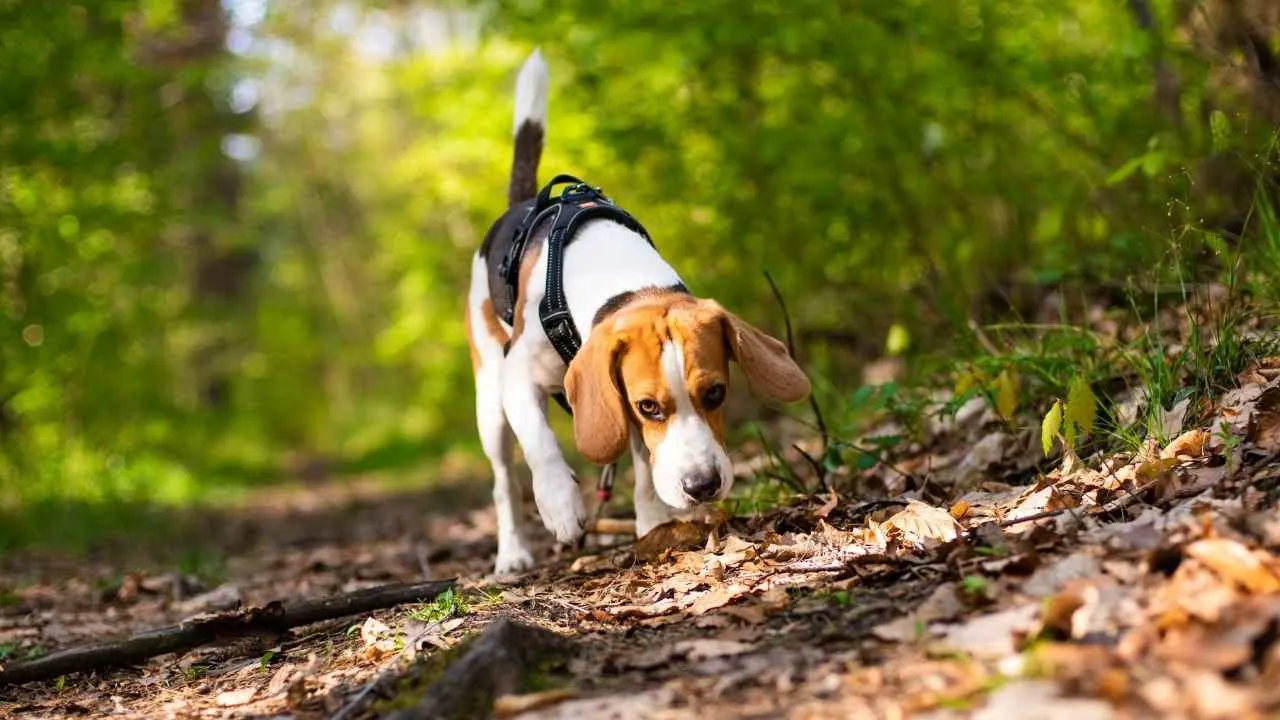
The Beagle is a small-to-medium hound breed celebrated for its cheerful nature and keen sense of smell. Bred for hunting in packs, these dogs are social and adaptable, making them a great fit for family life.
There are two size varieties—those under 13 inches and those between 13–15 inches tall—with weights ranging from 20–30 pounds. Beagles live about 10–15 years and belong to the Hound Group in the American Kennel Club. Their coat is short, easy to maintain, and comes in attractive shades like tricolor, lemon, or red and white.
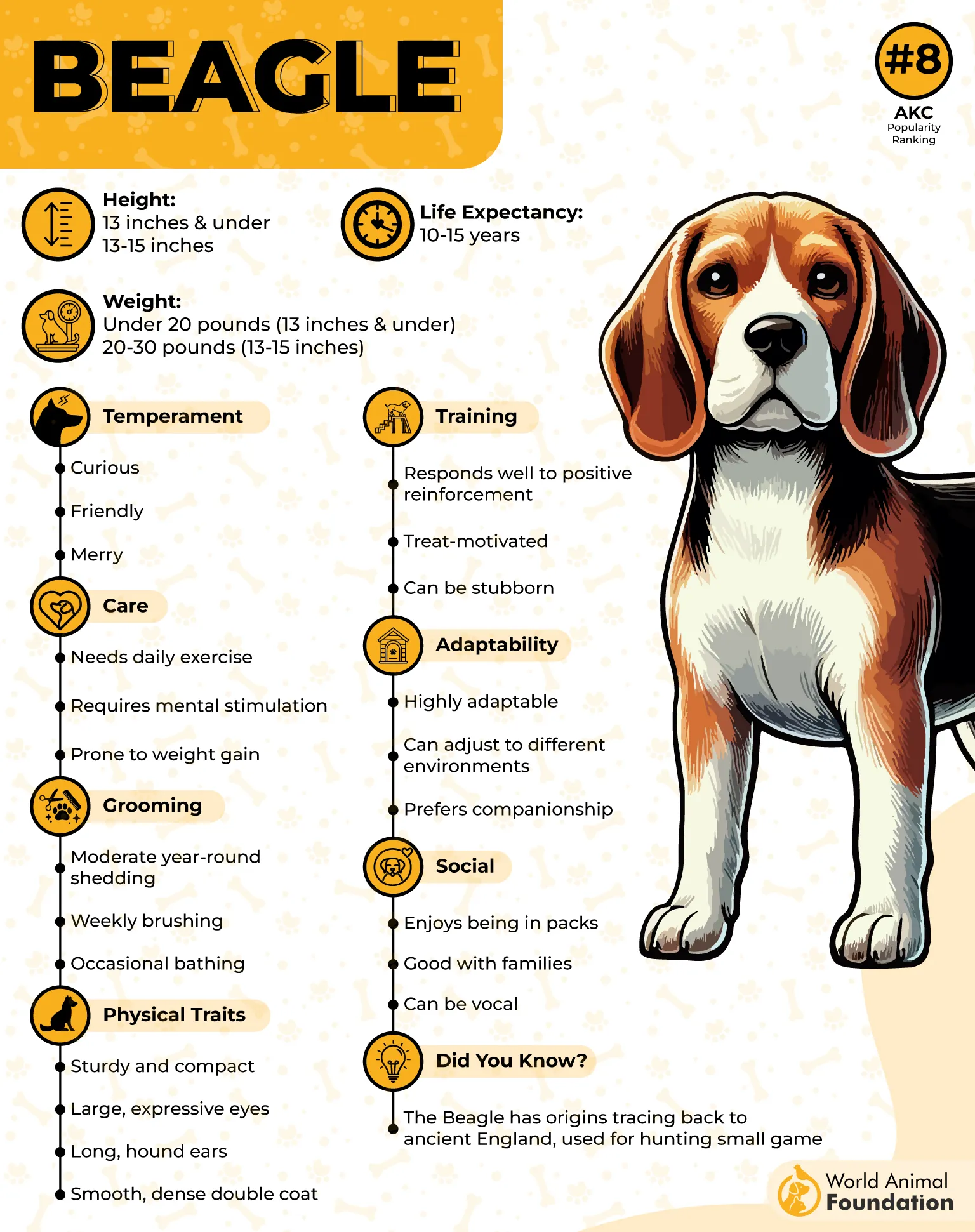
Beagles are wonderful at teaching children responsibility through simple yet powerful life lessons. Their natural ability to live in the moment reminds kids to focus on the here and now, helping them appreciate daily routines and interactions without distraction.
Caring for a Beagle also emphasizes the responsibility of regular exercise—these active dogs need daily walks, teaching children the importance of consistency and movement. By experiencing a Beagle’s curiosity and focus, kids learn that responsibility isn’t just about chores, but also about being attentive, engaged, and present in the world around them.
Because Beagles are curious and energetic, they keep children engaged in active play while also teaching patience and persistence through training. Their merry disposition and love for company make them not only loyal pets but also valuable teachers in responsibility.
Fun Fact: Beagles have one of the best scent detection abilities in the canine world—second only to the Bloodhound.
Conclusion
Choosing the best dog breeds for teaching children responsibility goes beyond temperament—it’s about finding companions that match your family’s lifestyle. Whether it’s a nanny dog like the gentle Bernese Mountain Dog, playful Beagle, or affectionate Cavalier King Charles Spaniel, the right dog can encourage kids to feed, walk, and groom regularly.
These experiences not only build responsibility but also nurture empathy and patience, especially in homes with small children or very young children.
From adopting a furry friend through animal shelters to welcoming a purebred or mixed breed, families have many options for adding a loyal furry family member. Breeds that are great with kids often adapt well to busy households and become excellent family pets that enrich daily life.
Because dogs tend to thrive on companionship, they give back the care they receive tenfold—turning everyday moments into lessons in love, respect, and commitment. With the right match, the family gains more than a pet; they gain a lifelong teacher and friend.


